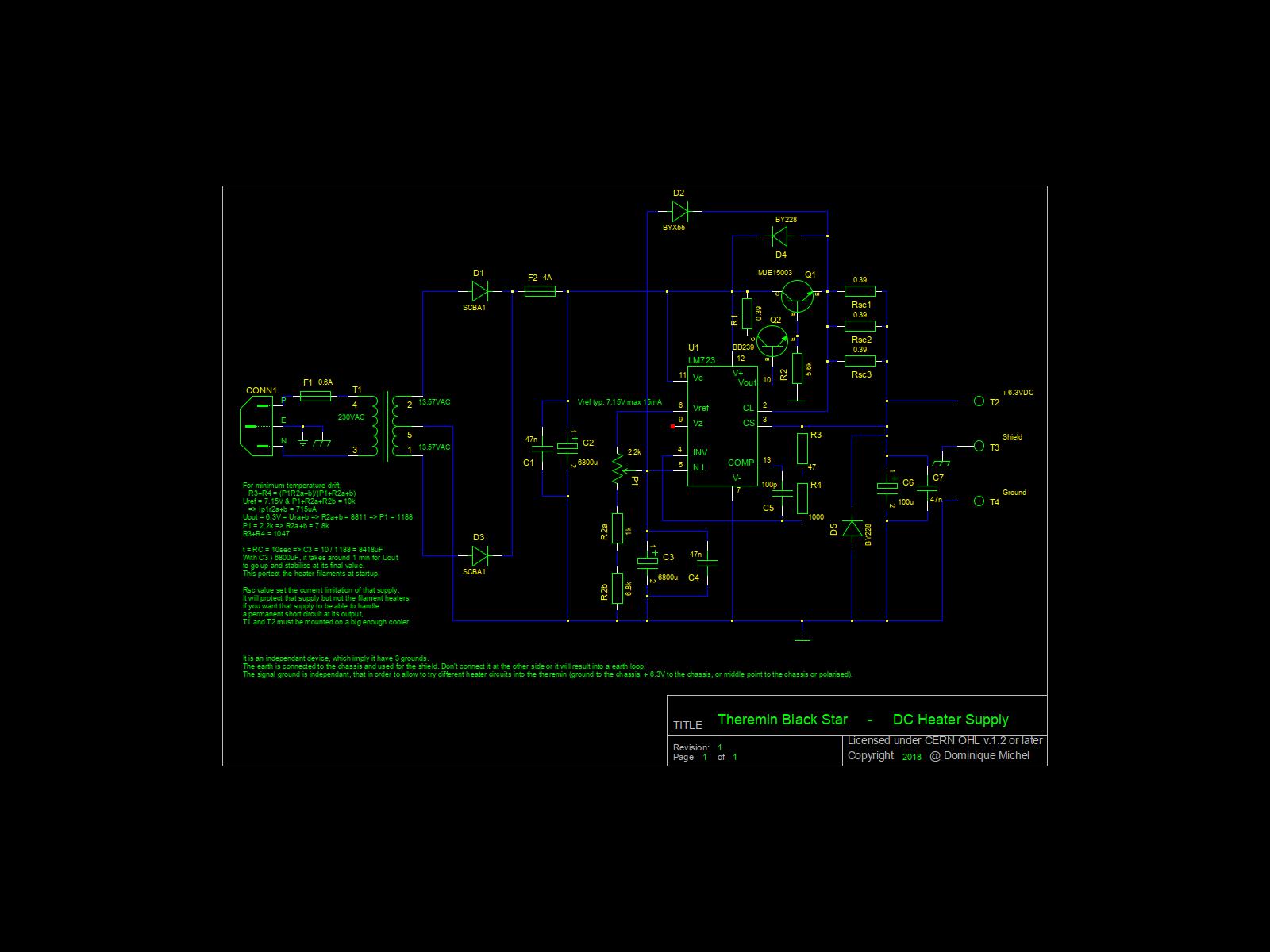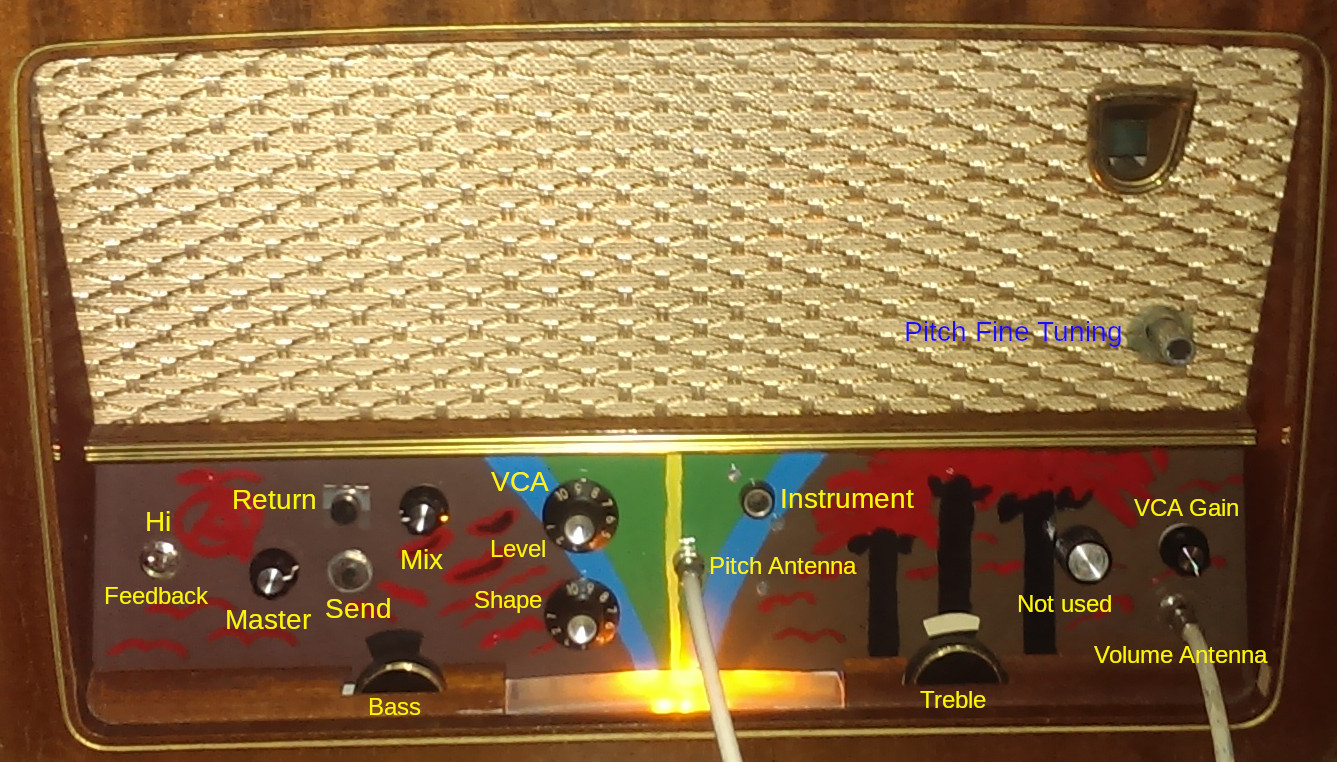I made a DC heater power supply and will post the schema later. I try to play my theremin in the garden, that in order to be far away from the electromagnetic perturbations of the house. The result was amazing, the sound was just crystal clear, and noise and hum free for any combination of VCA volume and gain potentiometer. It also showed me the volume is sometime too slow to react to hand movements. As I currently use only one triode for the VCA, the relatively huge output capacitor of the preceding stage must be influencing the RC time constant (a few msec) of the VCA detection. That, and the volume acting like a gain setting with non linear bandwidth, imply I will definitely make a 2 triodes circuit for the VCA.
It was noise and hum free in the garden, but it was still too much noise and hum when onto my workbench. That imply I must investigate the voltage on the antennas. I have 5 meters antenna cables and must try with shorter cables, it will level up the antennas voltage. That volume oscillator is the first one I made, one of the caps is not of optimal quality and must be changed. When making the other oscillators, I precedently constated than the ECC85 is less exigent in that regard than the triode mounted EBF89. To change that capacitor should also give me a higher voltage on the antenna, that in order to get at least the same voltage that at the pitch antenna. With the gain at its max, the instrument is much less noisy than with the gain at its minimum. That imply the noise must come from the volume antenna. If I can get it to be noise and hum free onto my workbench, I can assume it will work the same in almost any other environment.




